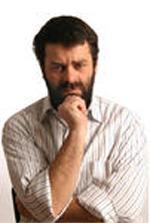
Sexual dysfunction or sexual malfunction is difficulty during any stage of the sexual act (which includes desire, arousal, orgasm, and resolution) that prevents the individual or couple from enjoying sexual activity. Sexual dysfunction disorders are generally classified into four categories: sexual desire disorders, sexual arousal disorders, orgasm disorders, and sexual pain disorders. There may be medical causes to these disorders, such as decreased blood flow or lack of vaginal lubrication. Chronic disease can also contribute, as well as the nature of the relationship between the partners. As the success of sildenafil (Viagra) attests, most erectile disorders in men are primarily physical, not psychological conditions. An erection occurs when the nervous system activates a rapid increase in blood flow. The vascular muscle in the spongy area becomes engorged with blood and the outflow of blood is cut off. An erection can occur as a reflex as we see in spinal cord patients, or can be caused by psychogenic (originating in the mind) stimulation. Numerous sexual stimuli are processed by the brain and transmitted to the penis via the nervous system. Erectile dysfunction, also called impotence, means that a man's penis doesn't get hard enough to have intercourse. The man cannot get or maintain an erection. This condition affects approximately 30 million men in the United States. Erectile dysfunction is not the same as premature ejaculation, the inability to ejaculate (retarded ejaculation) or infertility.) Sildenafil (Viagra), vardenafil (Levitra) and tadalafil (Cialis) drugs can cause minor side effects such as flushing and headache, but they have been shown to be safe in most men, including those with heart disease. However, these drugs can interact with other medications and cause dangerously low blood pressure. In particular, they should never be taken with nitroglycerin or other nitrate medications commonly used to treat heart disease. Men with enlarged prostates who take alpha-blocker drugs such tamsulosin (Flomax) or doxazosin (Cardura) should probably avoid PDE5 drugs.
continue
|

The outermost epidermis is consists of stratified squamous epithelium with an underlying basement membrane. It contains no blood vessels, and is nourished by diffusion from the dermis. The main type of cells which make up the epidermis are keratinocytes, with melanocytes and Langerhans cells also present. The epidermis can be further subdivided into the following strata (beginning with the outermost layer): corneum, lucidum, granulosum, spinosum, basale. Cells are formed through mitosis at the innermost layers. They move up the strata changing shape and composition as they differentiate, inducing expression of new types of keratin genes. They eventually reach the corneum and become sloughed off (desquamation). This process is called keratinization and takes place within about 30 days. This layer of skin is responsible for keeping water in the body and keeping other harmful chemicals and pathogens out. The dermis lies below the epidermis and contains a number of structures including blood vessels, nerves, hair follicles, smooth muscle, glands and lymphatic tissue. It consists of loose connective tissue otherwise called areolar connective tissue - collagen, elastin and reticular fibres are present. Erector muscles, attached between the hair papilla and epidermis, can contract, resulting in the hair fibre pulled upright and consequentially goose bumps. Skin can be dividided into thick and thin types. Thick skin is present on the soles of the feet and the palms of the hands. It has a larger stratum corneum with a higher keratin content. Thick skin does not grow hair; its purpose is to help grip. Thin skin is present on the bulk of the body and has a smaller stratum corneum and fewer papillae ridges. It has hair and is softer and more elastic. The characteristics of the skin, including sensory nerve density and the type of hair, vary with location on the body. The skin supports its own ecosystems of microorganisms, including yeasts and bacteria, which cannot be removed by any amount of cleaning. In general these organisms keep one another in check and are part of a healthy skin. When the balance is disturbed, e.g., by antibiotics which kill bacteria, there may be an overgrowth and infection by yeasts. The skin is continuous with the inner epithelial lining of the body at the orifices, each of which supports its own complement of flora.
continue
|

Women require 60 grams, men 80 to 90 grams, adolescent boys and girls 80 to 100 grams of protein. It is supplied by milk, buttermilk, yogurt, soyabean, eggs, cheese, meat and fish. A deficiency of some of the B vitamins, of iron, copper and iodine may cause hair disorders like falling of hair and premature greying of hair. Silicon bags are inserted beneath an area of hairy scalp and gradually inflated with saline water over a six-week period. This causes the hair-bearing skin to stretch, thus increasing the amount of hair-bearing scalp. After removing the bags, expanded hair bearing skin is lifted and moved to an adjacent bald area where a similar sized patch of scalp has been excised. Hair transplantation refers to the surgical movement of permanent hair with its roots to an area of bald or balding skin. Hair transplantation is an effective and permanent solution for hair loss. Hair transplantation is a surgical modality used for the correction of androgenic alopecia, scarring alopecia, and other causes of permanent alopecia. The removed hair follicles are then divided into individual grafts of varying sizes. The smallest grafts contain 1-2 hairs and are often referred to as "follicular units" or "micrografts". Larger minigrafts may contain up to 6 hairs and can provide more density per graft. Choice of number and type of graft is made taking into account the patient's hair type, quality, color and the area to be transplanted. Once prepared the grafts (hair and its roots) are then inserted into the thin area. Women with localized thinning on the top of their heads or thinning around the temples often make good candidates for hair transplantation. Prior to evaluation for hair transplantation, it is important for women to discuss your thinning hair with a dermatologist and/or endocrinologist to make sure there is no other treatable reason for the hair loss.
continue
|
Read our other articles:
|